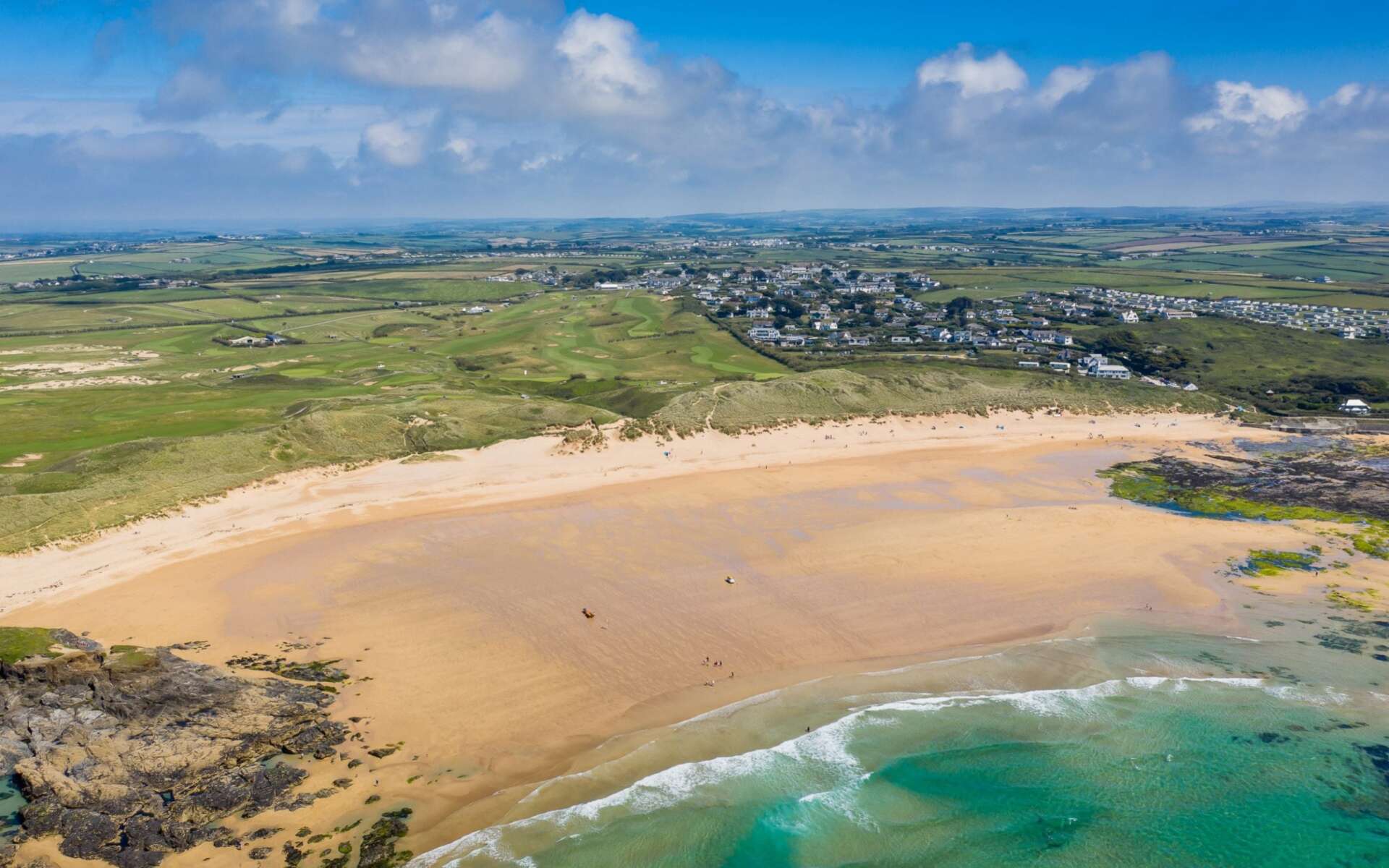This wide sweeping bay with its beautiful sandy beaches backed by a vast tumble of dunes is popular with beach-goers and surfers all year round. But beyond the seaside attractions it is a place that has a fascinating past. Constantine Bay is a mixture of myth and legend alongside a more tangible history.
There are old folktales of walkers being led astray by piskies in those dunes, of fairy markets that disappear with the dawn. And of wreckers at work on the beaches but it is the remains of an ancient chapel and holy well once buried in the silently smothering sands that draws the curious beyond the rolling waves.
Reputedly one of the best surfing beaches in Cornwall Constantine Bay is named after a 6th century Cornish saint. As well as a holy man Constantine is said to have been a cousin of King Arthur and one of the ancient kings that ruled Dumnonia – the historic name for a kingdom that once encompassed Cornwall and parts of Devon. Constantine is thought to have helped to fund the Petroc Monastery at Bodmin before being killed by “Irish pirates” in 576 AD.
Legends of the past
Legend has it that back in the mists of time there was a thriving community on the coast at Constantine Bay but the village was swamped by sand centuries ago and disappeared. This is not an unusual tale for Cornwall, further west you will find the old church and oratory of St Piran, also once lost in the dunes near Perranporth, and on the coast near Crantock there is the story of Langarrow, a town so immoral that God sent a storm to bury it in sand in just one night!
The Holy Well at Constantine Bay
All that remains of the lost village at Constantine Bay is the ruins of its medieval church and an ancient well house which can be seen in the dunes that are now part of the Trevose Golf Course. First mentioned in 1390 the chapel was rebuilt in the 15th century but it is said that it was desecrated during the Reformation and partly destroyed. The building was then converted into alms-houses for the poor but by 1745 it was a ruin and the sand dunes slowly claimed all that remained.
In 1926 the site was excavated by Penrose Williams who uncovered the remains of a chancel, nave and south aisle as well as “many skeletons in slate cists”. The remains of the Holy Well and its well house were only uncovered in the last century too.
The chapel fell into disrepair
The well house at Constantine Bay, which would once have been a substantial building, survives as low walls surrounding a bubbling basin of crystal clear water filled by a rising spring. Legend has it that a few hundred years ago the people living in the settlement here had become lazy and, like the population of Langarrow, badly behaved, forgetting their faith. They had let their chapel fall into disrepair and the Holy Well had become overgrown with weeds and filth. When there was a drought and their crops began fail the people asked the priest for help and he told them they must cleanse the well to save themselves. At first the people laughed at him but when they began to starve they did as he suggested and at once the skies clouded over and rain fell, saving them from starvation.
Restoration of the Holy Well
In recent years the well house has been covered by a modern roof to protect it from the elements. But both structures are reasonably well preserved given their age and chequered history. The church stands slightly south of the well, the walls of its tower about 6m high and with a decorative arched doorway still visible.
It is possible to visit this fascinating but little known site at Contstantine Bay via a public footpath that crosses the golf course above the beach. You will also find information boards giving more details of the history and ecology of the area.

